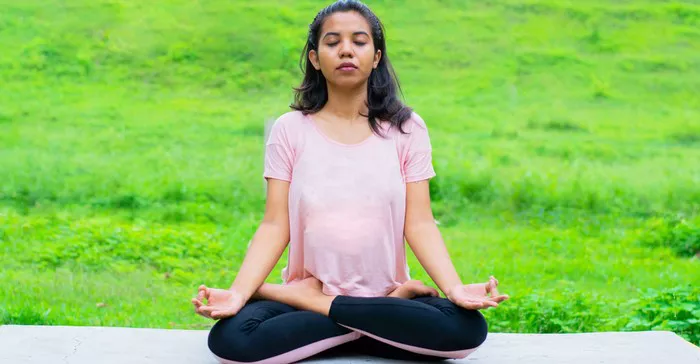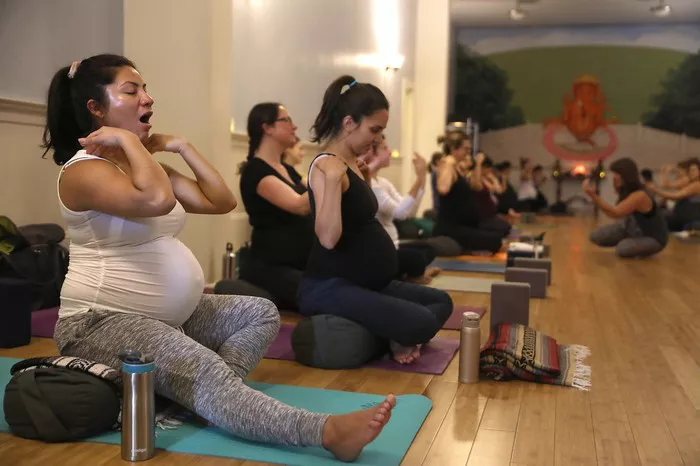Yoga is renowned for its holistic approach to health and well-being. Among its many benefits, yoga’s emphasis on breathing exercises, or pranayama, plays a crucial role in promoting heart health. These techniques are designed to enhance respiratory efficiency, reduce stress, and improve cardiovascular function. In this article, we will explore top six essential breathing exercises that can significantly benefit heart health.
1. Diaphragmatic Breathing (Abdominal Breathing)
Diaphragmatic breathing, also known as abdominal or belly breathing, is a fundamental breathing technique that promotes relaxation and reduces stress. By engaging the diaphragm, this exercise helps to maximize oxygen intake and improve overall respiratory efficiency.
How to Perform Diaphragmatic Breathing:
- Find a Comfortable Position: Sit or lie down in a comfortable position with your back straight.
- Place Your Hands: Place one hand on your chest and the other on your abdomen.
- Inhale Deeply: Breathe in slowly through your nose, allowing your abdomen to rise while keeping your chest relatively still.
- Exhale Slowly: Exhale slowly through your mouth, letting your abdomen fall.
- Repeat: Continue this pattern for 5-10 minutes, focusing on deep, relaxed breaths.
Benefits for Heart Health:
- Reduces Stress: Lowers cortisol levels, which can help reduce blood pressure.
- Improves Oxygenation: Enhances the efficiency of the respiratory system, ensuring better oxygen supply to the heart.
- Promotes Relaxation: Activates the parasympathetic nervous system, encouraging a state of calm and reducing the strain on the heart.
2. Anulom Vilom (Alternate Nostril Breathing)
Anulom Vilom, or alternate nostril breathing, is a balancing pranayama technique that harmonizes the left and right hemispheres of the brain, promoting mental clarity and relaxation. This practice is particularly effective in calming the mind and reducing cardiovascular strain.
How to Perform Anulom Vilom:
- Sit Comfortably: Sit in a comfortable cross-legged position with your spine straight.
- Use Your Hand: Use your right thumb to close your right nostril and your right ring finger to close your left nostril.
- Inhale through the Left Nostril: Close your right nostril and inhale slowly through your left nostril.
- Exhale through the Right Nostril: Close your left nostril with your ring finger, release your thumb from your right nostril, and exhale slowly through your right nostril.
- Alternate Sides: Inhale through the right nostril, then exhale through the left nostril. This completes one cycle.
- Repeat: Continue for 5-10 minutes, focusing on smooth and controlled breaths.
Benefits for Heart Health:
- Balances the Nervous System: Helps regulate the autonomic nervous system, reducing stress and promoting heart health.
- Improves Circulation: Enhances blood flow and oxygen supply throughout the body, benefiting the cardiovascular system.
- Reduces Blood Pressure: The calming effect of this technique can help lower blood pressure, reducing the risk of heart disease.
3. Bhramari (Bee Breath)
Bhramari, or bee breath, is a calming pranayama technique that involves producing a humming sound during exhalation. This practice is known for its ability to induce a deep sense of relaxation and mental tranquility.
See Also: Bhramari Pranayama (Bee Breath): Everything You Need to Know
How to Perform Bhramari:
- Sit Comfortably: Sit in a comfortable position with your spine straight and your eyes closed.
- Close Your Ears: Use your thumbs to gently close your ears.
- Place Your Fingers: Place your index fingers on your forehead, and your remaining fingers over your eyes and cheeks.
- Inhale Deeply: Take a deep breath in through your nose.
- Exhale with a Hum: Exhale slowly through your nose while making a humming sound like a bee.
- Focus on the Sound: Concentrate on the vibration and sound as you exhale.
- Repeat: Continue this process for 5-10 minutes.
Benefits for Heart Health:
- Reduces Anxiety: The soothing sound and vibration help to reduce anxiety and stress, which are risk factors for heart disease.
- Promotes Relaxation: Activates the parasympathetic nervous system, encouraging a state of relaxation and reducing heart rate.
- Enhances Mental Clarity: Improves concentration and mental clarity, contributing to overall well-being.
4. Kapalabhati (Skull Shining Breath)
Kapalabhati, or skull shining breath, is an invigorating pranayama technique that involves rapid, forceful exhalations and passive inhalations. This practice is known for its cleansing and energizing effects.
How to Perform Kapalabhati:
- Sit Comfortably: Sit in a comfortable cross-legged position with your spine straight.
- Take a Deep Breath: Inhale deeply through your nose.
- Forceful Exhalations: Perform short, forceful exhalations through your nose, pulling your navel in towards your spine with each exhale.
- Passive Inhalations: Allow inhalation to occur passively between exhalations.
- Repeat: Continue this cycle for 1-2 minutes, focusing on the rhythm of your breath.
Benefits for Heart Health:
- Cleanses the Lungs: Helps to clear the respiratory system, improving lung function and oxygenation.
- Boosts Circulation: Enhances blood circulation, providing more oxygen and nutrients to the heart.
- Increases Energy Levels: Promotes a sense of vitality and well-being, which can positively impact cardiovascular health.
5. Ujjayi (Ocean Breath)
Ujjayi, or ocean breath, is a pranayama technique that involves slightly constricting the throat to create a gentle, whispering sound during breathing. This practice is known for its calming and grounding effects.
How to Perform Ujjayi:
- Sit Comfortably: Sit in a comfortable position with your spine straight.
- Inhale Deeply: Breathe in slowly through your nose, slightly constricting the back of your throat to create a soft, ocean-like sound.
- Exhale Slowly: Exhale slowly through your nose, maintaining the constriction in your throat to continue the ocean sound.
- Focus on the Sound: Concentrate on the soothing sound of your breath.
- Repeat: Continue this process for 5-10 minutes.
Benefits for Heart Health:
- Reduces Stress: The rhythmic sound and controlled breathing promote relaxation and reduce stress levels.
- Lowers Heart Rate: Encourages a slower, more relaxed heart rate, which can benefit overall cardiovascular health.
- Enhances Focus: Improves concentration and mindfulness, contributing to emotional well-being.
6. Sheetali (Cooling Breath)
Sheetali, or cooling breath, is a pranayama technique that involves inhaling through a rolled tongue or pursed lips to cool the body and calm the mind. This practice is particularly beneficial for reducing stress and promoting relaxation.
How to Perform Sheetali:
- Sit Comfortably: Sit in a comfortable position with your spine straight.
- Roll Your Tongue: Roll your tongue into a tube shape (if you cannot roll your tongue, you can purse your lips instead).
- Inhale through the Tongue: Inhale slowly through your rolled tongue or pursed lips, feeling the cool air enter your mouth.
- Exhale through the Nose: Close your mouth and exhale slowly through your nose.
- Repeat: Continue this process for 5-10 minutes.
Benefits for Heart Health:
- Reduces Stress and Anxiety: The cooling effect of this breath helps to calm the mind and reduce stress levels.
- Lowers Blood Pressure: Promotes relaxation and can help lower blood pressure, benefiting heart health.
- Enhances Relaxation: Encourages a state of tranquility, reducing the overall strain on the heart.
Conclusion
Incorporating these six essential breathing exercises into your daily routine can significantly improve heart health. By promoting relaxation, reducing stress, and enhancing respiratory efficiency, these pranayama techniques offer a holistic approach to maintaining a healthy heart. As always, it is important to practice these exercises with mindfulness and consistency, and consult with a healthcare professional before starting any new exercise regimen, especially if you have any pre-existing health conditions. Embrace the power of breath and experience the profound benefits it can bring to your heart and overall well-being.
Related topics:

















